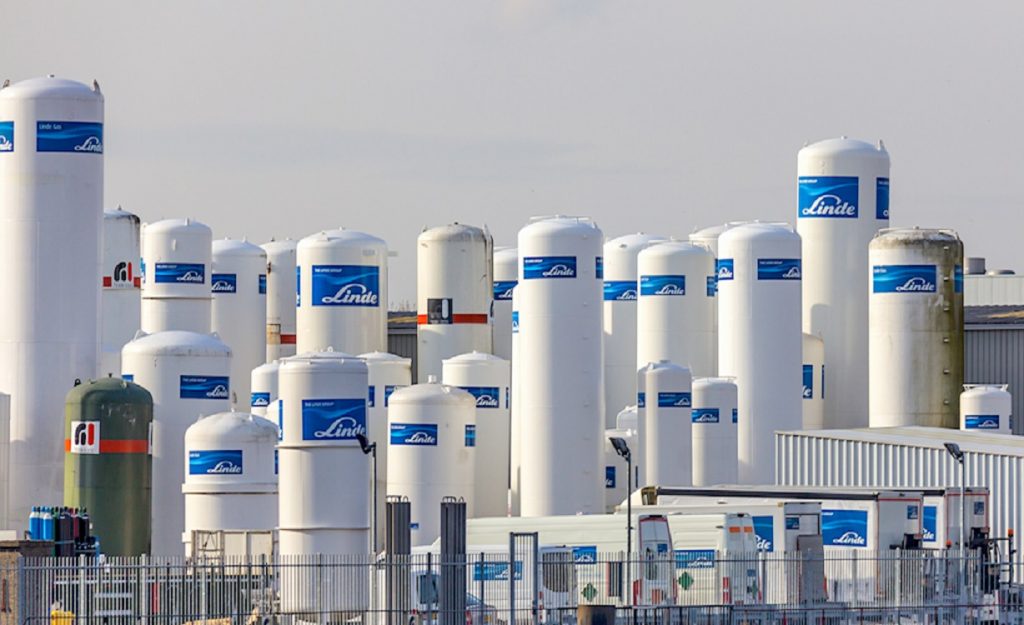![A hydrogen filling station in Reykjavík, Iceland. By Jóhann Heiðar Árnason (Own work) [CC-BY-SA-3.0 (http://creativecommons.org/licenses/by-sa/3.0) or GFDL (http://www.gnu.org/copyleft/fdl.html)], via Wikimedia Commons](http://occupyworldwrites.org/wp-content/uploads/2014/04/512px-Hydrogen_filling_station-300x225.jpg)
A hydrogen filling station in Reykjavík, Iceland. By Jóhann Heiðar Árnason (Own work) [CC-BY-SA-3.0 (http://creativecommons.org/licenses/by-sa/3.0) or GFDL (http://www.gnu.org/copyleft/fdl.html)], via Wikimedia Commons
We’ve heard a lot over the last thirty years or so about how we, sooner or later, will run out of oil. The petrochemical industry touches us all in so many ways every day; it’s used to power our transportation, make the plastics that we use for more and more things, make the drugs that we rely on to treat various conditions; the list goes on and on.
With all the other purposes we have for oil, using it as a fuel seems to be the most wasteful use of this valuable resource. But, electric cars don’t have the range to be practical except for in an urban environment, and the charging takes time. And, in the urban areas where an electric car would be the most practical, there’s a lack of charging infrastructure. Many people park out in the street or in parking lots; the challenge of creating a charging network for these people will be daunting. How will the power be metered and distributed?
So, what are the other options? Biofuel has its supporters, but growing the crops for ethanol or methanol uses valuable cropland that could be used for crops instead. And, both are toxic, and highly flammable. Then, there’s hydrogen.
Hydrogen is the most common element in the universe. Here on Earth, we have vast supplies of hydrogen in our water. However, it doesn’t naturally exist here in its pure form; we have to extract it. And, since hydrogen is a gas, to transport it and be able to dispense it safely, we need to liquefy it. However, because it’s so abundant and because a hydrogen powered engine (either by burning straight hydrogen or used in a fuel cell) produces zero emissions, the push for hydrogen fueled vehicles and the infrastructure to support them is strong.
![Honda FCX. By EERE [Public domain], via Wikimedia Commons](http://occupyworldwrites.org/wp-content/uploads/2014/04/Hydrogen_vehicle.jpg)
Honda FCX. By EERE [Public domain], via Wikimedia Commons
Both Honda and Toyota
are bringing hydrogen fuel cell cars to market next year, but they won’t be cheap. They’ll sell for close to $100,000 to begin with, with prices hopefully dropping to the $30,000 range in the 2020s once production ramps up. As usual with these things, they’ll only be available in California and the Northeast to begin with (there’s some, if limited, infrastructure to support them in both places) and from there eventually go nationwide.
Then, there’s the Holy Grail of energy- fusion reactors. Fusion reactors work along the same principle that stars do; two hydrogen atoms collide and fuse together; the result is one helium atom and energy. The problem here’s isn’t so much one of having a high enough temperature and either a high enough speed or pressure to force the hydrogen atoms to collide violently enough to fuse; it’s keeping a self-sustaining reaction going that creates more power than it uses. However, Livermore National Laboratory announced last month that they had created small fusion reactions producing five times the power that they were able to achieve a couple years ago. And, General Fusion announced this week that they’ll begin to work on a full-size prototype fusion reactor as early as the end of this year.
The U.S. Navy announced another use for sea water this week- direct conversion to whatever form of hydrocarbon fuel they need at the time. The advantages to this for the military are fairly obvious, as they can create what fuel they need when they need it, and it works in the engines our ships currently use. However, like fuel cells in cars, mass practical application’s 7 to 10 years away. And, at the present time, you need to process 23,000 gallons of sea water to get one gallon of fuel. This wouldn’t be a practical way to supply fuel for land transportation, but for ships and power generators along the ocean, this could be implemented in the foreseeable future.
There’s still a lot of work to do before these uses of sea water can compete with traditional energy sources on a cost basis, but the rewards are worth it. If we put the same manpower and resources into developing hydrogen and renewable energy sources such as solar and wind power as we do into developing weapons of war and protecting the status quo, we could probably be almost completely green as far as energy goes by 2040.
![Basic design for a wind hydrogen system for an off-grid community. By Longershanks at en.wikipedia [Public domain], from Wikimedia Commons](http://occupyworldwrites.org/wp-content/uploads/2014/04/Wind_hydrogen-300x189.jpg)
Basic design for a wind hydrogen system for an off-grid community. By Longershanks at en.wikipedia [Public domain], from Wikimedia Commons



![A hydrogen filling station in Reykjavík, Iceland. By Jóhann Heiðar Árnason (Own work) [CC-BY-SA-3.0 (http://creativecommons.org/licenses/by-sa/3.0) or GFDL (http://www.gnu.org/copyleft/fdl.html)], via Wikimedia Commons](http://occupyworldwrites.org/wp-content/uploads/2014/04/512px-Hydrogen_filling_station-300x225.jpg)
![Honda FCX. By EERE [Public domain], via Wikimedia Commons](http://occupyworldwrites.org/wp-content/uploads/2014/04/Hydrogen_vehicle.jpg)
![Basic design for a wind hydrogen system for an off-grid community. By Longershanks at en.wikipedia [Public domain], from Wikimedia Commons](http://occupyworldwrites.org/wp-content/uploads/2014/04/Wind_hydrogen-300x189.jpg)